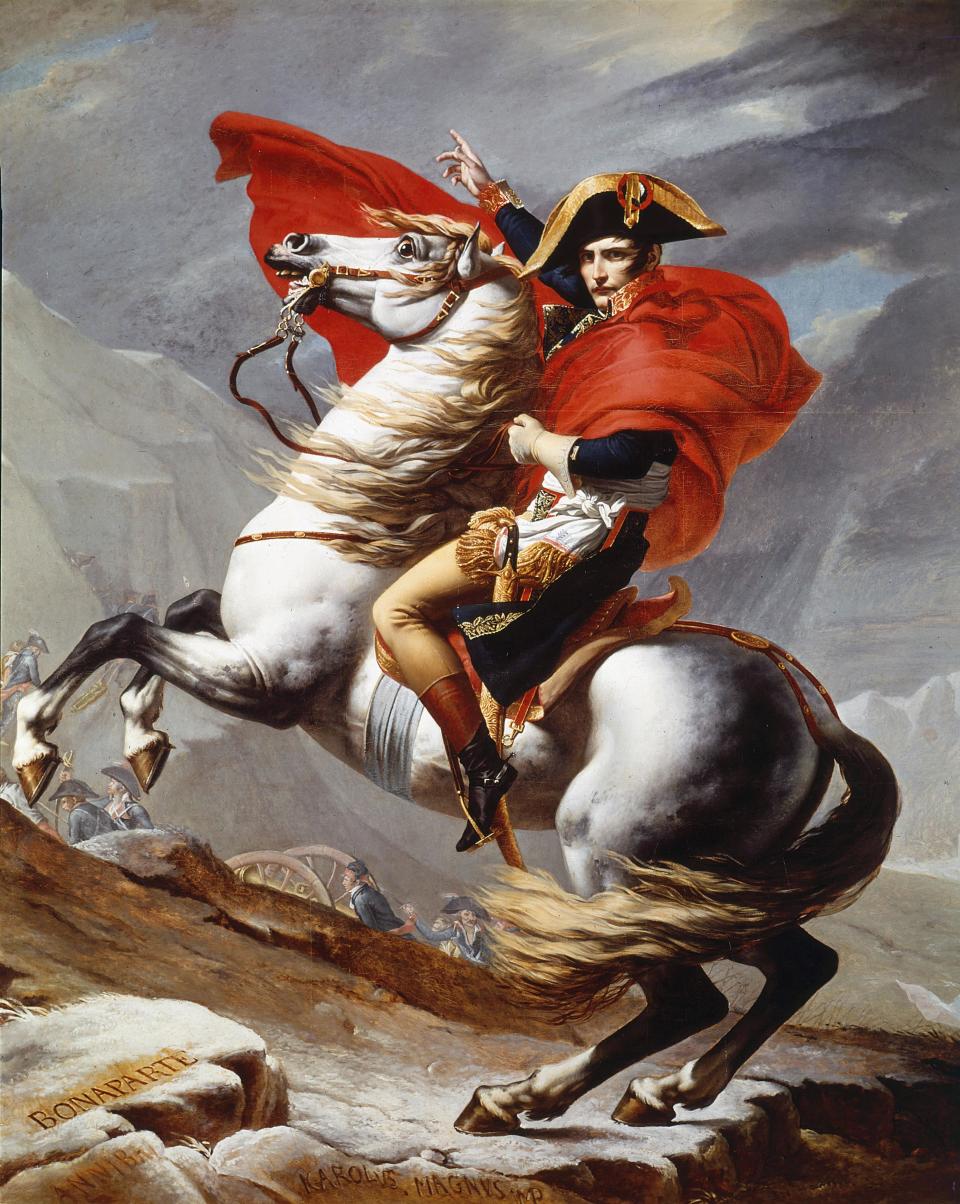Irish ride into battle against English to claim Napoleon's horse

Surely it must have been the ultimate humiliation for the defeated French Emperor Napoleon; when Perfidious Albion took his horse Marengo and on the steed’s death displayed his bones in an English museum.
But now the Irish may be riding to the rescue of Old Boney's honour.
The townspeople of Buttevant, County Cork (population 1,752) have declared that the bones of Marengo - on which Napoleon rode to victory at the Battles of Austerlitz, Jena and Wagram, before final defeat at Waterloo - are rightfully theirs.
They claim the horse was Irish bred and sold at the town's renown Cahirmee horse fair, from where it found its way into Napoleon’s stables.
Battle began after the National Army Museum announced it was to restore Marengo's skeleton and re-erect him in a rampant pose.
Now councillors and Kanturk and Mallow Municipal District Council have written to the museum to lay their claim to the stallion’s remains.
The councillors want Marengo's skeleton to become a centrepiece of a museum display, attracting visitors, not least the French, to the town.
Councillor Bernard Moyniham, a Fianna Fail councillor for Kanturk and Mallow, said: “We should get this horse back to Buttevant where it was originally sold at the famous Cahirmee Fair. It would be a huge tourist attraction. It’s in the National Army Museum in Chelsea. They have it. It’s not attracting tourists there.
“It’s not a far fetched idea. It’s something I’ve thought through. It has potential for the north Cork area and for tourism.”
Complicating matters is a rival claim from the Bartlemy horse fair, 25 miles from Butevant, to be the place where Marengo was sold. For a time a giant mural of Napoleon riding the stallion was painted on the gable wall of a pub in Bartelmy.
Some historians maintain that the horse was in fact born in Egypt and obtained by Napoleon during his Egyptian campaign of 1798-1801.
However, the good people of Buttevant are adamant Marengo was theirs.
“I’m working on the absolute, verifiable facts I have from local historians that Marengo was sold at Cahirmee Fair,” said Mr Moyniham.
"It seems fitting that a claim to the horse once ridden by Britain's great enemy across the Channel should be made by a country with which we have an equally conflicted history."
Napoleon himself raised an Irish Legion in 1803 in anticipation of an invasion of Ireland to free the island from the British yoke. The Legion included included Irish rebels captured during the failed uprising of 1798.
It was the artist Jacques-Louis David’s portrait of Napoleon on the rearing white Arab stallion that most vividly captured the public image of the Emperor, spreading the spirit of the French revolution through Europe.
Following his defeat at Waterloo Napoleon fled the battlefield in a cart, leaving Marengo - which had been wounded eight times in battle - to be captured alive by the triumphant Grenadier Guards and taken to England, where it was paraded through the streets.
After his death at the age of 38 in 1831 Marengo’s skeleton was displayed at the now defunct Royal United Services Institute Museum.
Years later Marengo's remains arrived at the National Army Museum, where they have been on display since the 1960s.
Now his bones, which had been held together by iron bars and bolts, have been carefully repaired by Derek Bell, a professional prop maker, and Arianna Bernucci, a senior conservator at the Natural History Museum, before giving him a more lifelike stance.
Perhaps inevitably the call to repatriate Marengo’s remains has won the backing of Sinn Fein. The party has previously tried to get the British authorities to repatriate the bodies of the Manchester Martyrs - three members of the Irish Republican Brotherhood executed for the murder of a police officer in 1867 - to Ireland.
In the unlikely event of victory over the British, Kanturk and Mallow Municipal District Council plan to display Marengo alongside some of the 2,788 artefacts excavated by archaeologists from beneath Buttevant’s main street.
These included a gold posy ring inscribed with the date of 1713, animal bones, pottery, tiles, bone combs, numerous coins, buttons, buckles, pins and clay wig curlers.
The National Army Museum said it would deal “sensitively” to Buttevant’s claim to Marengo’s skeleton.
A spokesman for the museum said: “Decisions are made on the basis of the evidence and case provided to support any claim whilst being balanced with our obligation to protect and safeguard collections for future generations. We also welcome any loan requests of our items to museums both nationally and internationally.”

 Yahoo News
Yahoo News 